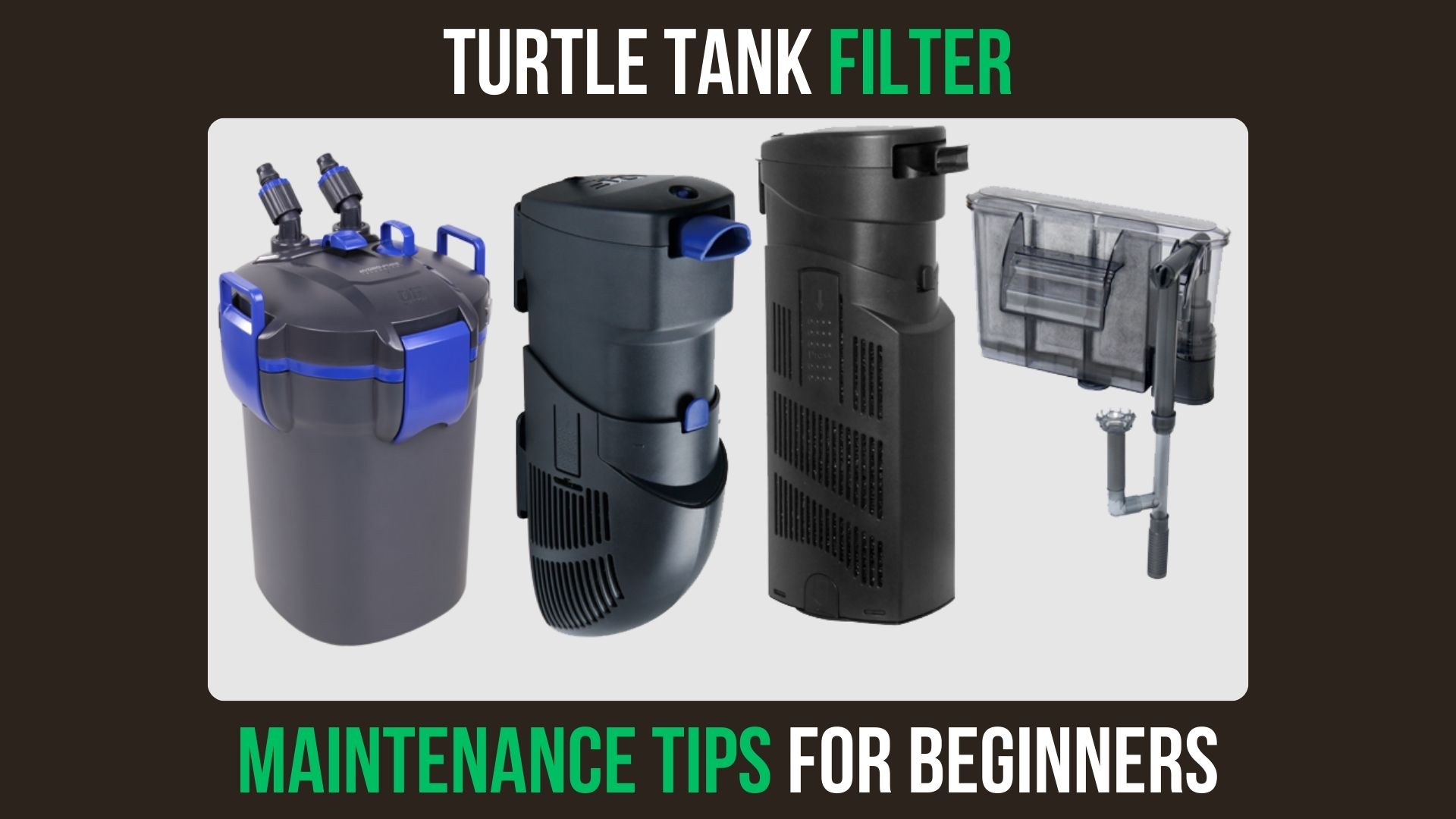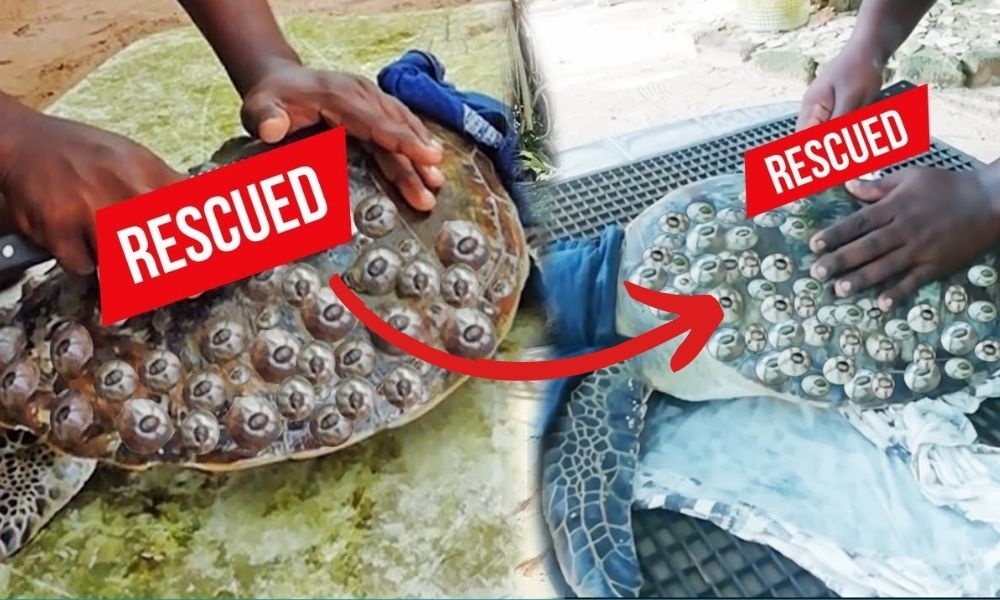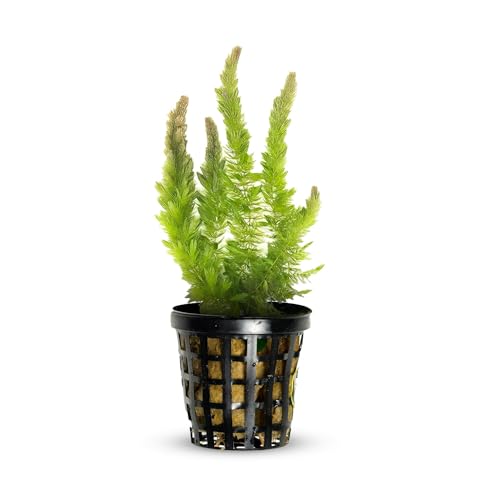Keeping a turtle tank clean is crucial for your pet’s health. A well-maintained filter is the heart of this cleanliness.
New turtle owners often find filter maintenance confusing. It may seem complex, but it’s manageable with the right tips. Clean filters ensure clear water, reduce odors, and keep your turtle happy. Regular care of your tank filter prevents build-up of harmful bacteria and debris.
This blog will guide you through simple maintenance tips. These tips are easy to follow and perfect for beginners. With a little effort, you can create a healthy environment for your turtle. Let’s dive into the essentials of maintaining your turtle tank filter.

Choosing The Right Filter
Choosing the right filter for your turtle tank is crucial. A proper filter helps maintain a clean and healthy environment for your turtle. This section will guide you in selecting the best filter for your tank.
Types Of Filters
There are several types of filters available. Each has its own benefits and drawbacks. The three main types are canister filters, internal filters, and hang-on-back filters.
Canister filters are powerful. They are ideal for large tanks. They sit outside the tank, providing more space inside. They are also very efficient in cleaning.
Internal filters are compact. They fit inside the tank. They are suitable for small to medium tanks. They are easy to install and maintain.
Hang-on-back filters are versatile. They hang on the back of the tank. They are easy to access and clean. They work well for medium-sized tanks.
Filter Capacity
Filter capacity is vital. It determines how much water the filter can clean. Choose a filter with a capacity suitable for your tank size.
A good rule is to choose a filter that can handle at least twice the volume of your tank. For example, if you have a 20-gallon tank, get a filter rated for 40 gallons.
This ensures the water stays clean and clear. It also helps reduce the frequency of cleaning.
Consider the number of turtles and their size. Larger turtles produce more waste. You may need a more powerful filter to keep the water clean.
Regular maintenance is key. Clean the filter according to the manufacturer’s instructions. This ensures it works efficiently.
Setting Up Your Filter
Setting up your turtle tank filter is a crucial step for maintaining a clean and healthy environment for your pet. A well-installed filter helps in removing waste, uneaten food, and harmful chemicals from the water, ensuring your turtle remains happy and healthy. Below, we will guide you through the essential steps of setting up your filter.
Placement In Tank
Placement of the filter inside the tank is essential for its efficiency. Follow these tips:
- Position near the water surface: Place the filter intake near the water surface. This ensures optimal water circulation and efficient waste removal.
- Avoid turtle’s resting area: Ensure the filter is not placed where your turtle likes to rest or sleep. This prevents any disturbances to your pet.
- Secure the filter: Ensure the filter is securely attached to the tank wall. This prevents it from moving due to the turtle’s activity.
Initial Setup Steps
Setting up your turtle tank filter for the first time can be straightforward. Follow these steps:
- Read the manual: Start by reading the filter’s instruction manual. Each filter model may have specific setup instructions.
- Assemble the filter: Assemble the filter components as per the manual. Ensure all parts are correctly fitted.
- Rinse the filter media: Rinse the filter media (sponges, activated carbon, etc.) under tap water. This removes any dust or debris.
- Install the filter: Place the filter inside the tank. Attach it to the tank wall using suction cups or clips provided.
- Prime the filter: Fill the filter with water to prime it. This step is crucial for starting the filtration process.
- Plug in the filter: Finally, plug in the filter and turn it on. Ensure it is working correctly by checking the water flow.
Following these steps will ensure your filter is set up correctly, providing a clean and healthy environment for your turtle.

Regular Maintenance Schedule
Maintaining a clean tank is crucial for your turtle’s health. Regular maintenance ensures that the water stays clean and the filter works efficiently. A well-maintained filter helps in removing harmful toxins, keeping the water clear and your turtle happy.
Following a regular maintenance schedule can make this task easier. It also extends the life of your filter. Let’s break down the maintenance tasks into weekly and monthly categories.
Weekly Tasks
Every week, check the filter to see if it’s functioning well. Clean the filter media gently with water from the tank. This keeps beneficial bacteria intact. Remove any debris or waste that might clog the filter. Make sure to inspect the water flow. It should be steady and strong.
Test the water quality weekly. You can use a water testing kit. Check for ammonia, nitrites, and pH levels. Make sure the water parameters are within a safe range for turtles. Replace about 10-20% of the tank water with fresh, dechlorinated water.
Monthly Tasks
Once a month, do a more thorough cleaning of the filter. Take apart the filter and clean all parts. This includes the impeller, tubing, and other components. Use a soft brush or cloth to scrub away any buildup.
Replace the filter media if it looks worn out or dirty. Some filter media might need replacement every two to three months. Check the manufacturer’s guidelines for specific recommendations. Clean the tank walls and decorations to prevent algae growth. This keeps the tank looking nice and helps maintain water quality.
:strip_icc()/how-to-clean-a-dirty-fish-tank-1380968-bd21f97b03ac48afaf9b6fe442f73d1f.png)
Cleaning The Filter
Keeping your turtle tank filter clean is crucial for a healthy environment. Regular maintenance ensures the filter works efficiently. This guide will help you with the cleaning process.
Disassembling The Filter
First, unplug the filter from the power source. Carefully remove the filter from the tank. Follow the manufacturer’s instructions to disassemble the filter. This usually involves removing the filter media and other components.
Cleaning The Components
Rinse the filter media in tank water. This preserves beneficial bacteria. Use a soft brush to clean the filter casing and impeller. Avoid using soap or chemicals. These can harm your turtle.
Check all components for debris. Ensure there are no clogs. Clean the intake tube and any other parts thoroughly. Reassemble the filter once all parts are clean.
Replacing Filter Media
Maintaining a clean turtle tank is crucial. The filter media plays a significant role in this process. Beginners often overlook the importance of replacing filter media regularly. This guide will help you understand when and how to replace filter media to keep your turtle tank healthy.
When To Replace
Knowing when to replace filter media is essential. Replacement schedules depend on the type of filter media you use. Here are some general guidelines:
- Mechanical media: Replace every 1-2 months.
- Chemical media: Replace every 1-2 months or as needed.
- Biological media: Replace only when it starts to deteriorate.
Check the manufacturer’s instructions for specific timelines. Regularly inspect the filter media for wear and tear. If you notice decreased water flow or a foul smell, it’s time to replace the media.
Types Of Filter Media
Different types of filter media serve various purposes. Understanding each type helps you maintain a clean and healthy turtle tank.
| Type | Purpose | Replacement Frequency |
|---|---|---|
| Mechanical Media | Traps debris and particles | Every 1-2 months |
| Chemical Media | Removes toxins and impurities | Every 1-2 months |
| Biological Media | Promotes beneficial bacteria growth | Only when deteriorated |
Mechanical media includes sponges and filter pads. They catch large debris and particles. Chemical media like activated carbon remove toxins. They ensure the water remains clear and odor-free. Biological media houses beneficial bacteria. These bacteria break down harmful ammonia and nitrites.
Maintaining your filter media is key to a healthy turtle tank. Regular checks and replacements keep your tank clean and your turtles happy.
Troubleshooting Common Issues
Troubleshooting common issues with your turtle tank filter can save you time and money. Understanding common problems helps keep your filter working properly. Here are some tips for dealing with low water flow and unusual noises.
Low Water Flow
Low water flow can be a frustrating issue. First, check if the filter is clogged. Debris and waste can block the filter. Clean the filter sponge and other parts. Make sure to rinse them in tank water. Tap water can harm the good bacteria. Also, check the intake tube for blockages. Small particles can get stuck there. Keeping the filter clean ensures proper water flow.
Another reason for low water flow is a dirty impeller. The impeller is the part that moves water through the filter. Over time, it can get dirty and slow down. Remove the impeller and clean it with a soft brush. Make sure it spins freely before putting it back. Regular maintenance keeps the filter running smoothly.
Unusual Noises
Unusual noises from your filter can be alarming. Start by checking if the filter is properly assembled. Loose parts can create noise. Tighten any loose screws and ensure all parts fit snugly. Next, check for trapped air in the filter. Air bubbles can cause rattling sounds. Tilt the filter slightly to release any trapped air. This often solves the noise problem.
Another cause of noise is a worn-out impeller. A damaged impeller can make grinding sounds. Inspect the impeller for wear and tear. Replace it if needed. Using a high-quality impeller reduces noise and extends the life of your filter.
By addressing these common issues, you can maintain a healthy environment for your turtle. Regular maintenance and troubleshooting keep your filter in top shape.
Enhancing Filter Efficiency
Enhancing the efficiency of your turtle tank filter ensures a healthier environment for your pet. Clean water helps turtles thrive. Proper maintenance keeps the filter working well. Let’s explore some tips to improve your filter’s performance.
Supplemental Equipment
Using additional equipment can boost your filter’s efficiency. Consider adding a pre-filter sponge. It catches large debris before it reaches the main filter. This reduces the workload on your primary filter. It also extends its lifespan.
Another helpful tool is a UV sterilizer. It kills harmful bacteria and algae in the water. This keeps the tank cleaner for longer periods. It also helps in maintaining clear water, which is vital for your turtle’s health.
Optimizing Water Flow
Proper water flow is crucial for filter efficiency. Ensure there are no obstructions in the tank. Remove any objects blocking the water intake or outflow. This ensures smooth circulation. It helps the filter work more effectively.
Position the filter correctly. Place it in a spot where water can flow freely. Check the filter’s manual for the best placement tips. Sometimes, adjusting the filter height can improve water flow. Experiment with different positions for optimal results.
Regularly monitor the water level in the tank. The filter works best when the water level is consistent. Too low or too high levels can affect its efficiency. Keep the water level steady for the best performance.
Health Benefits For Turtles
Maintaining a clean turtle tank filter is crucial for your turtle’s health. Clean water ensures your turtle lives in a safe and healthy environment. Regular maintenance of the filter can prevent many diseases and promote longevity. Let’s explore the health benefits of a well-maintained turtle tank filter.
Clean Water Importance
Clean water is essential for your turtle’s well-being. It helps in reducing the risk of infections. Dirty water can lead to respiratory problems and other illnesses.
To maintain clean water:
- Change the water regularly
- Use a high-quality filter
- Monitor the water pH levels
A good filter removes waste and keeps the water clear. This reduces the chance of harmful bacteria growing in the tank.
Disease Prevention
A clean turtle tank filter plays a key role in disease prevention. Many diseases in turtles are caused by dirty water. These include shell rot and respiratory infections.
To prevent diseases:
- Clean the filter monthly
- Check the filter for any damage
- Replace filter media as needed
Regular filter maintenance ensures that harmful pathogens are kept at bay. This makes the tank a safe place for your turtle.
Maintaining a clean turtle tank filter is vital for your turtle’s health. It ensures clean water and prevents diseases. This promotes a healthy and happy life for your turtle.

Frequently Asked Questions
How Often Should I Clean My Turtle Tank Filter?
Clean your turtle tank filter every 2-4 weeks. This ensures efficient filtration and a healthy environment for your turtle. Regular maintenance prevents build-up of debris and harmful bacteria.
What Is The Best Filter For Turtle Tanks?
Canister filters are highly recommended for turtle tanks. They provide strong filtration and are easy to maintain. They handle high waste levels effectively.
Can I Use Tap Water For Turtle Tank?
Yes, but treat the tap water first. Use a water conditioner to remove chlorine and harmful chemicals. This makes the water safe for your turtle.
How Do I Know If My Filter Is Working?
Check the water clarity and smell. If the water remains clear and odor-free, your filter is working properly. Regularly inspect the filter media for clogs.
Conclusion
Maintaining your turtle tank filter is crucial. Clean it regularly for optimal performance. Check for clogs to keep water flowing smoothly. Replace parts when they wear out. Consistent care ensures a healthy environment for your turtle. Use these tips to keep the tank clean and your pet happy.
Happy turtles lead to happy owners.





Leave a Reply